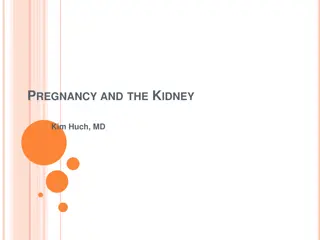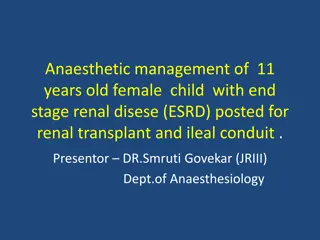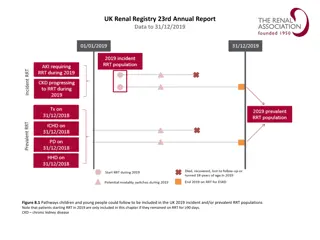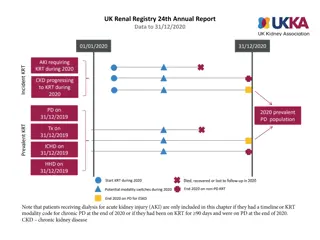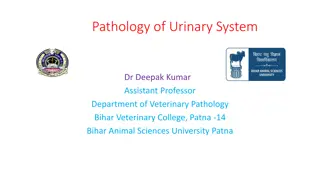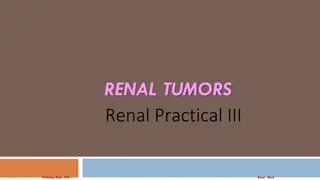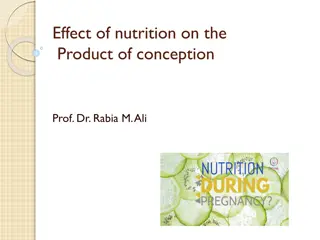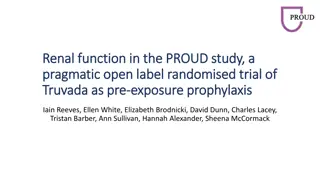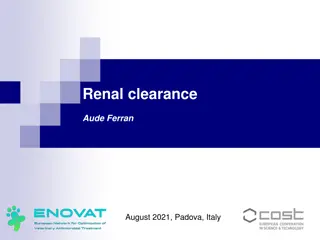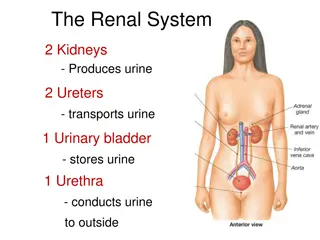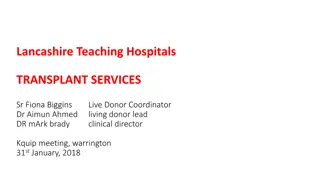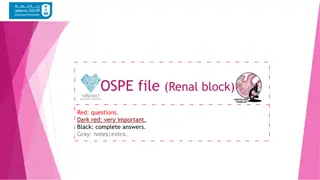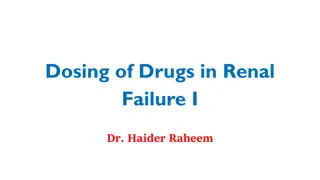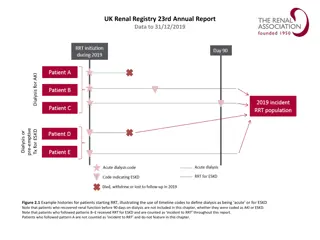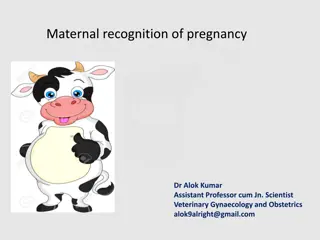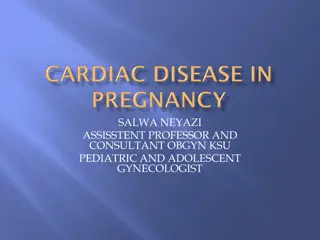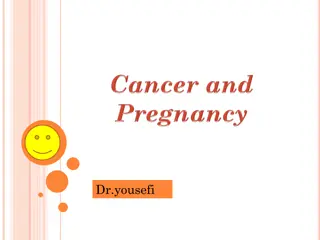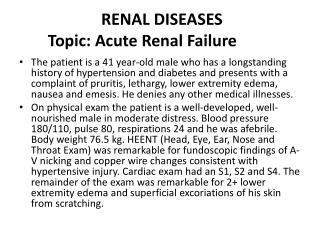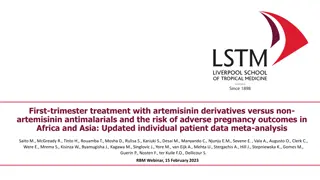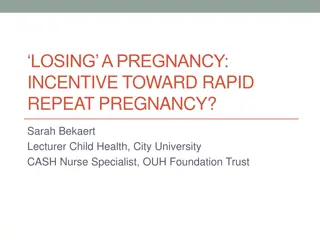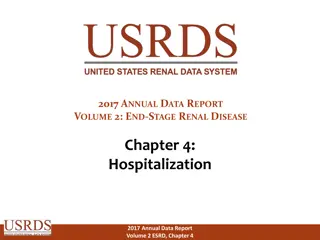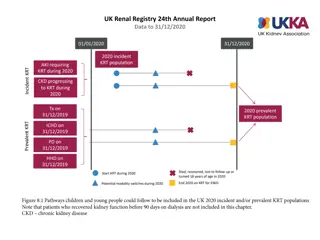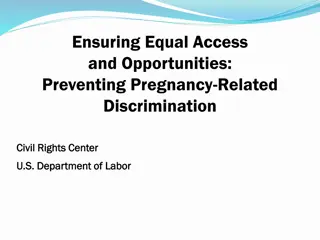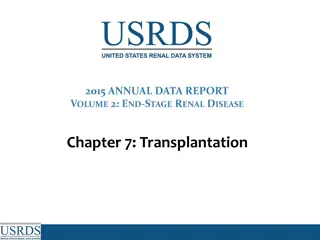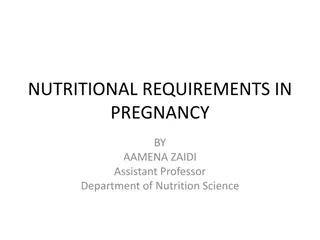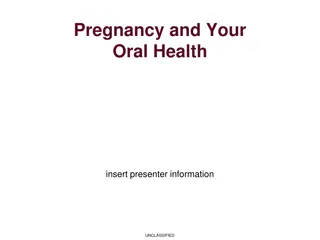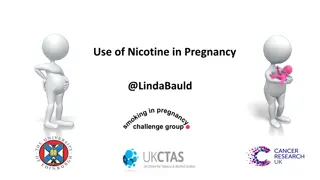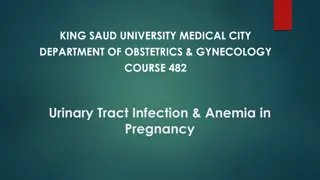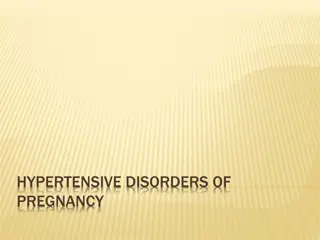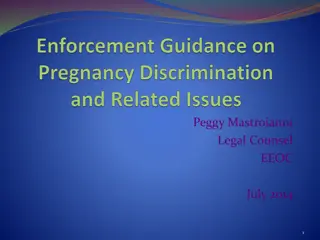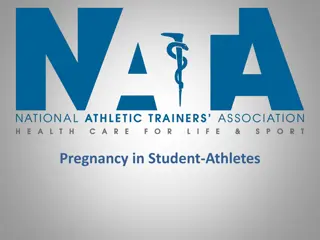Renal Disease and Pregnancy: Key Points and Case Study Analysis
This presentation focuses on renal disease in pregnancy, with major points highlighting the importance of considering preeclampsia, frequent evaluations, and fetal well-being. The case study of a 26-year-old pregnant woman presenting with confusion, lethargy, and other symptoms is also analyzed. Concepts such as attribution, availability, and anchoring in medical decision-making processes are discussed, emphasizing the need to avoid stereotyping patients and relying on past experiences to anchor diagnoses.
Download Presentation

Please find below an Image/Link to download the presentation.
The content on the website is provided AS IS for your information and personal use only. It may not be sold, licensed, or shared on other websites without obtaining consent from the author. Download presentation by click this link. If you encounter any issues during the download, it is possible that the publisher has removed the file from their server.
E N D
Presentation Transcript
Renal Disease and Pregnancy Robert Egerman, MD
Major points: It s preeclampsia until proven otherwise Fetal reference not deference More frequent evaluations/visits
Case: 245.0 26 yof P0 at 24 weeks gestation Confused, lethargic, febrile for 8 hours T102 P130 BP 150/70 FHR 180 Difficult to arouse Hyperdynamic precordium, Basilar crackles Uterine contractions
Attribution / Stereotype Creating a stereotype (of the patient) in your mind and attributing symptoms and findings to the stereotype Mrs. T is a complainer with abd. cramps (and symptoms are viewed in this light) Ms. V is a drug seeker with N/V/pain
Availability Tendency that an easily remembered prior experience (diagnosis) explains the situation we are facing and immediately available to repeat Ms. R. had reflux Ms. H. has reflux Mrs. S has ligamentalgia
Anchoring Tendency to seize on the first symptom; anchoring the diagnosis snap judgment may be right, but can lead us astray Substernal chest pain is reflux Lower abdominal pain is ligamentalgia
Case: 646.7 23 yof P2 at 34 weeks Decreased fetal movement Nausea, emesis for 3 days T98 P100 BP 140/80 FHR 0 Cr 2.7 mg/dL Glucose 51 mg/dL INR 3
Overview General aspects Physiologic changes Preeclampsia AFL AFE Chronic renal disease
Genetic issues http://www.snof.org/maladies/tay.html http://www.stanford.edu/class/psych 121/humangenome-CF.htm
H+ + HCO3- H2O + CO2 H2CO3 24 40 30 18
Maintenance of Renal Blood Flow Estrogen Aldosterone ACE Angio AI AII Renin
110 4 144 144 3.1 1.4 14
Physiology of Calcium and Pregnancy Goal: get Ca++ to the fetus Increase bone resorption Increase intestinal absorption Non PTH mediated: PTH levels are ____ PTHrP Causes increase in 1,25 OH Vitamin D See increase intestinal absorption by 12 weeks See increase in hypercalciuria
Physiology of Calcium and Pregnancy- What happens to. . .? Calcium levels in pregnancy Ionized calcium levels Albumin Phosphate 25 OH Vit D 1,25 OH Vit D PTH Calcitonin
Physiology of Calcium and Pregnancy- What happens to. . .? Calcium levels in pregnancy Ionized calcium levels Albumin Phosphate 25 OH Vit D 1,25 OH Vit D PTH Calcitonin lower same lower same same higher lower higher
Physiology of Calcium and Pregnancy- What crosses the placenta? Calcium 25 OH Vit D 1,25 OH Vit D PTH Calcitonin
Physiology of Calcium and Pregnancy- So what makes PTHrP? Placenta Decidua Amnion Umbilical cord Fetal parathyroid Breast tissue COOH terminal portion of PTHrP- osteostatin May protect maternal bones
Hypertension and pregnancy Chronic hypertension Gestational hypertension Preeclampsia Mild Severe HELLP Superimposed preeclampsia
Preeclampsia Mild systolic diastolic > proteinuria > 90 - 109 > 140 - 159 mmHg mmHg 0.3 - 4.9 gm / 24 hour Severe systolic diastolic proteinuria or. . . > > > 160 mmHg 110 mmHg 5 grams / 24 hour
Complications of Preeclampsia Cardiovascular Severe hypertension/ pulmonary edema Renal Oliguria/ renal failure Hematologic Hemolysis/ thrombocytopenia Hepatic Rupture/ hepatocellular dysfunction Neurologic Eclampsia/ cerebral edema/ CVA Uteroplacental Abruption/ IUGR/ distress/ death
Preeclampsia: Sibai, Obstet Gynecol 2005
Perinatal outcomes Gestational Hypertension Severe Gestational HTN vs Severe Preeclampsia Outcome Relative risk 0.81 0.7 1.83 0.63 1.87 0.55 0.75 95% CI Delivery <37 wks Delivery <35 wks SGA infant Abruption LGA infant NICU admissions RDS 0.53-1.24 0.32-1.56 0.56-5.71 0.07-5.69 0.28-12.49 0.23-1.31 0.21-2.63 Buchbinder, Am J Obstet Gynecol 2002
Hypoxia sFlt Maternal spiral artery Trophoblast Preeclampsia Normal
Endothelial dysfunction Endoglin TGF Hypertension Renal dysfunction Capillary leak Edema VEGF PGF sFlt VEGF PGF sFlt sFlt
3000 sFLT PIGF 2000 pg/ml 1000 0 Control N = 102 Mild PE N = 71 Severe PE N = 29 PE <37 wks N = 26 PE + SGA N = 14 PE <34wks N = 9 Adapted from Levine, N Engl J Med 2004
sFlt-1 and SLE 52 patients with SLE 9 with preeclampsia and 9 superimposed Increased sFlt-1 with preeclampsia: 1768 + 196 pg/mL vs 1177 + 143 pg/mL p = 0.02 No association with SLEDAI {commercial kit under development} (Gestational age at sampling 22-32 weeks) Qazi, J Rheumatol 2008
Postpartum preeclampsia 3988 patients-229 (5.7% pp); 151 patients 16% eclampsia, 6% pulm edema, 1.3% VTE, 1 death Readmit 1-24 days (mean 7); headache 62%, visual change 19%, SOB 13%, seizures 11% Matthys, Am J Obstet Gynecol 2004
Preeclampsia and Calcium Decreased 1,25 (OH)2 D Decreased calcium Gut absorption Placental dysfunction Decreased Urine calcium Decreased Ionized calcium Renin JG cells Increased PTH HTN
Preeclampsia and Calcium What s going on? PTHrP PTH Receptor 25 (OH) D 1,25 (OH)2 D Calcium T-lymphocytes Receptor PREECLAMPSIA
Preeclampsia and Calcium CPEP Trial- 2 gm 13-21 weeks Levine, N Engl J Med 1997
Preeclampsia and Calcium WHO Trial- 1.5 grams < 20 weeks Villar, Am J Obstet Gynecol 2006
Preeclampsia and Calcium Cochrane Review 2006 Randomized trial 1 gram vs placebo 11/12 studies 14,946 RR HTN 12/12 studies 15,206 RR preecl 4 studies Benefit is in patients on low Ca++ diet 0.7 (0.57-0.88) 0.5 (0.33-0.69) 9732 RR composite 0.8 (0.65-0.97
Preeclampsia and MgSO4 10,141 women randomized to MgSO4 or placebo Mg Placebo (5055) (5055) Severe preeclampsia BP at entry Syst >170 bpm Dias >110 bpm Eclampsia Death 26% 27% 16% 16% 22% 23% 40 (0.8%) 96 (1.90%) 0.42 (0.29-0.6) 11 (0.2%) 20 (0.4%) 0.55 (0.26-1.14) Magpie, Lancet 2002
Perinatal outcomes - CHTN Chronic hypertension (n = 29,842) Odds Ratio 95% CI Fetal growth restriction Low birth weight 4.9 4.7-5.2 5.4 5.2-5.5 Preterm delivery Respiratory distress syndrome 3.2 4.0 3.1-3.3 3.8-4.2 Gilbert, J Reprod Med 2007
Perinatal outcomes - CHTN Chronic hypertension (n = 29,842) Maternal death Fetal death Odds Ratio 95% CI 4.8 2.3 3.1-7.6 2.1-2.6 Neonatal death Stroke maternal Severe preeclampsia Pulmonary edema 5.2 Renal failure Abruption 2.3 5.3 2.7 2.0-2.7 3.7-7.5 2.5-2.9 3.9-6.7 4.4-8.1 2.0-2.3 6.0 2.1 Gilbert, J Reprod Med 2007
Perinatal outcomes - CHTN Chronic hypertension Mild Severe Preeclampsia 25% 50 - 75% Abruption 1.5% 10 20% SGA 11% 25 40% Sibai, JAMA 2007, Obstet Gynecol 2002 and NEJM 1998


